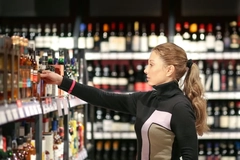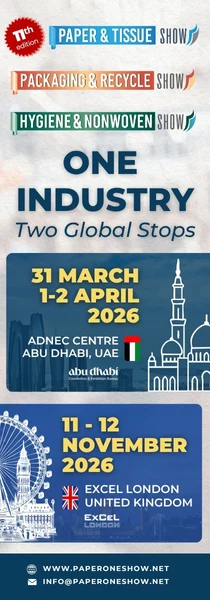FEVE warns EU PPWR undermines regional glass industry and discourages design innovation
Key takeaways
- FEVE warns that PPWR Article 10 could harm EU glass manufacturers by creating legal uncertainty and discouraging investment.
- The federation argues that minimizing packaging without clear definitions risks undermining brand identity and consumer appeal.
- FEVE calls for revisions to ensure design freedom, legal clarity, and alignment with EU industrial and circular economy goals.
The European Container and Glass Federation (FEVE) has warned that the EU’s Packaging and Packaging Waste Regulation (PPWR) could “negatively impact” the glass manufacturing industry. We sit down with FEVE to hear how PPWR risks creating legal uncertainty, discouraging investment and design innovation, and shifting production outside the EU.
In a letter addressed to EU leaders, FEVE specifically critiques Article 10 of the regulation, which requires all packaging to be reduced to the “minimum necessary” weight and volume by January 1, 2030.
“Our sector has significant concerns about the consequences of the new packaging minimization rules, which risk eroding brand equity and consumer appeal, while also damaging Europe’s competitiveness at home and abroad,” a FEVE spokesperson tells Packaging Insights.
“FEVE is calling for clearer definitions that recognize design-related features as legitimate elements of functionality, not as excessive packaging.”
The spokesperson notes that, in 2023, glass-packaged products contributed €140 billion (US$162.3 billion) to EU exports, accounting for approximately 5.7% of all exports.
FEVE argues that Article 10 does not consider the impact of the PPWR on marketing, brand differentiation, product presentation, and consumer acceptance.
Legal uncertainty
.webp) FEVE says for many brands, a glass bottle’s shape is key to product identity and consumer appeal.The spokesperson explains that the current PPWR text “lacks legal clarity on a number of points.” For example, terms like “packaging functionality” and “shape” are not clearly defined, creating compliance risks and fragmentation of the single market.
FEVE says for many brands, a glass bottle’s shape is key to product identity and consumer appeal.The spokesperson explains that the current PPWR text “lacks legal clarity on a number of points.” For example, terms like “packaging functionality” and “shape” are not clearly defined, creating compliance risks and fragmentation of the single market.
“For many iconic products, the shape of a glass bottle is integral to its identity and consumer expectations. Legal clarity on these terms is essential to avoid arbitrary restrictions that would complicate compliance and undermine brand value and the competitiveness of Europe’s flagship sectors.”
The spokesperson states that the current PPWR approach “disproportionally” impacts the glass packaging value chain, emphasizing that design is “integral” to product identity, consumer trust, and market positioning in the wine, spirits, cosmetics, perfumery, and gourmet foods sectors.
In the letter, FEVE recommends the concept of “packaging functionality” be broadened to cover products in which design is expected by consumers, particularly, though not only, for high-end goods.
Diversity in glass design
The letter calls for the European Commission (EC) to reconsider Article 10 to ensure clarity, proportionality, and legal certainty for EU glass manufacturers.
The spokesperson adds that the glass manufacturing industry has been lightweighting glass packaging for decades without compromising on quality, safety, or design.
“These objectives must coexist with design creativity and innovation and the ability to valorize specific product characteristics that are central to brand identity, consumer expectations, and global competitiveness.”
They highlight that the glass industry supports reducing unnecessary packaging, but stresses that distinctive design is what makes European products recognizable and competitive globally.
“Rigid rules risk erasing Europe’s diverse glass designs, replacing them with uniform packaging that weakens brands and entire value chains.”
Pragmatic adjustments
.webp) FEVE argues the PPWR should strike a balance between packaging minimization and design freedom.FEVE urges the EU to recognize that marketing, brand differentiation, and product presentation are key drivers of economic competitiveness.
FEVE argues the PPWR should strike a balance between packaging minimization and design freedom.FEVE urges the EU to recognize that marketing, brand differentiation, and product presentation are key drivers of economic competitiveness.
In the letter, it advocates for a balance between packaging minimization and design freedom, urging Article 10 to “coexist” with marketing and design. Moreover, it urges the EC to revise the February 11, 2025 cut-off date.
The spokesperson adds: “The PPWR only protects designs and trademarks registered before February 11, 2025. This is problematic because design cycles are short in many sectors, regular redesigns are essential to competitiveness, and limiting protection to pre-2025 designs would discourage innovation and creativity in the years ahead.”
The final recommendation from FEVE urges the EC to amend the references to maximum weight and volume limits, which should be determined on a case-by-case approach.
Policy and industry coherence
FEVE highlights that the EU’s circular economy goals are only realistic if there is “coherence between environmental and industrial competitiveness,” which safeguards investment, innovation, and skilled employment.
The final recommendation from FEVE urges the EC to amend the references to maximum weight and volume limits, which should be determined on a case-by-case approach.
The letter concludes: “Rigid limits are unworkable for glass packaging, which serves a wide variety of products with different needs, and would undermine design freedom, innovation, and product differentiation. This would be the only way to safeguard innovation while ensuring the Regulation remains workable in practice.”











